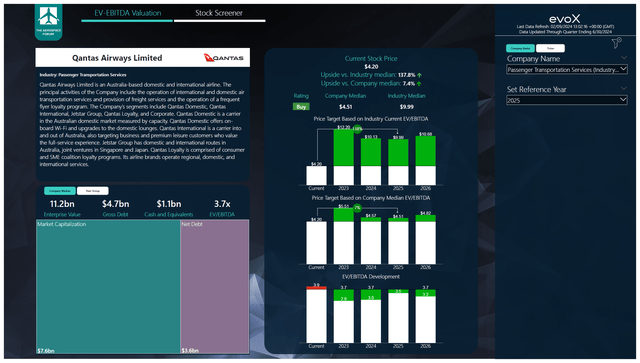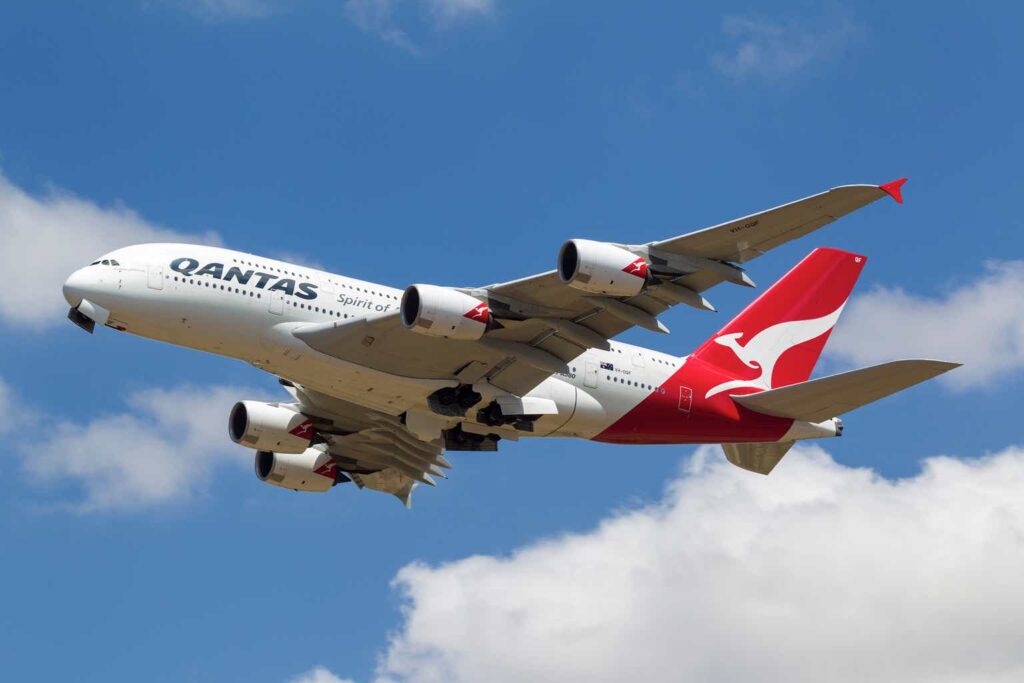In March, I rated Qantas stock a buy and that call has worked out rather well as the stock gained 20%. However, the reality is that airlines are facing a tough cost and revenue environment and the Qantas FY24 results also showed that. In this report, I will be discussing the most recent earnings, assess the risks and update my price target and rating for Qantas stock.
Qantas Earnings Pressured As Unit Revenue Strength Fades
The revenue development showed the challenging environment for airlines. On a 20.6% increase in capacity, the revenues grew only 10.7%. Domestic performance was good with revenues up 4% on a 1% increase in capacity. Nevertheless, underlying EBIT declined by 16% to A$1.063 billion. The biggest pain point was the international services where competition also added capacity leading to unit revenues declining. Capacity from Qantas grew 30% but only added 12% to revenues and underlying EBIT decreased 39% to A$556 million. Jetstar grew capacity by 25% and revenues by 16%. It was the only airline that added to EBIT and margins with EBIT growing 23% to A$497 million. Perhaps in the results of Jetstar Group, we also see a sign that air fares have increased to the extent that travelers are looking more and more into low-cost alternatives.
What we see is that airlines are currently adding capacity to the market while the demand environment for air travel has softened. For Qantas this meant that unit revenues declined nearly 9%.
Qantas Group
The group EBIT declined 15.7% to A$2.078 billion. What we see is that transitionary costs and capacity benefits were almost fully offset by the unit revenue pressure while inflation and industry costs were offset by the transformation initiative from Qantas to optimize the business. Loyalty results provided a small increase to EBIT compared to a year ago, but that was more than offset by lower freight revenues, customer investments and FX pressures.
I would say that the only bright spots in the cost balance was that unit revenues excluding fuel were down 5.8% but it should also be taken into account that on an 20.6% increase in capacity bringing unit costs down 5.8% is not huge.
What Are The Risks And Opportunities For Qantas?
The risk for Qantas is quite obvious and that is that capacity will continue to be added in favor of air fare stabilization. That risk is most prominent in the international market where RASK is set to fall another 7 to 10 percent as the company aims to fully recover its capacity to 100% of pre-COVID levels by the end of FY25. The domestic operations are expected to see unit revenues increases while net freight revenue is expected to be up and transformation initiatives are expected to offset inflationary cost pressures.
So, it is not all bad for Qantas but the cost and fair environment remains challenging. I expect unit revenue to be down on group level again while I believe unit revenues could be improving further.
Is Qantas Stock Still A Buy?
The Aerospace Forum
To determine multi-year price targets The Aerospace Forum has developed a stock screener which uses a combination of analyst consensus on EBITDA, cash flows and the most recent balance sheet data. Each quarter, we revisit those assumptions and the stock price targets accordingly. In a separate blog I have detailed our analysis methodology.
While the cost and revenue environment remain challenging the FY24 results were slightly better than expected and for FY25 and F26 the EBITDA estimates have gone up by 2.6% and 5.4% respectively while CapEx is expected to be lower than initially anticipated which boosts the free cash flow expectations into positive territory for the years ahead. Based on a company median EV/EBITDA there would be 7.4% upside for 2025 and an additional 7% in the year after. That is not most compelling investment case, but it should be noted that Qantas stock is significantly undervalued compared to peers and even a slight expansion in the EV/EBITDA multiple towards the peer group would unlock additional upside.
Conclusion: Qantas Focuses On Unit Cost Reduction And Capacity Recovery
For Qantas, it is quite clear that the company is accepting that the unit revenues will continue to trend down. That is a normalization that probably had to happen at some point and on the international operations, the company is aiming to regrow its capacity in order to push down unit costs further. Along with transformational initiatives that should provide the company with the ability to decrease unit costs excluding fuel and at full strength the company will also have increased competitive strength and if there is any improvement in the revenue environment that would provide a strong basis for margin expansion. That revenue driven margin expansion is not something that I would expect in FY25, but in the years after I could see some improvement as inflation eases and airlines cannot add a lot more capacity than they are already doing.
While the risks are there, I do believe that Qantas stock remains a buy but investors should be aware of the volatility for airline stocks.
Editor’s Note: This article discusses one or more securities that do not trade on a major U.S. exchange. Please be aware of the risks associated with these stocks.
Read the full article here



